- Home
- Things to Do in Sicily
- Greek Ruins in Sicily
Exploring the Enigmatic: Unveiling the Majestic Ancient Greek Ruins in Sicily
Do the exciting tales of history inspire you? Would you like to be transported back to ancient times and experience Greece's golden age?
You don't have to travel in time to experience the past. You only need to transport yourself to Sicily. There, you will find the most comprehensive selection of ancient Greek ruins outside Greece.
Magna Graecia, they called it. In its heyday, Greece extended into the south of Italy, home to many of the most beautiful cities of the Greek Archaic period.
Discover these beautifully preserved treasures, the stories carved in stone. Take a flight into ancient history and experience it all.
You can do all this on this most significant island of the Mediterranean. Ancient Greek ruins in Sicily are something to behold.
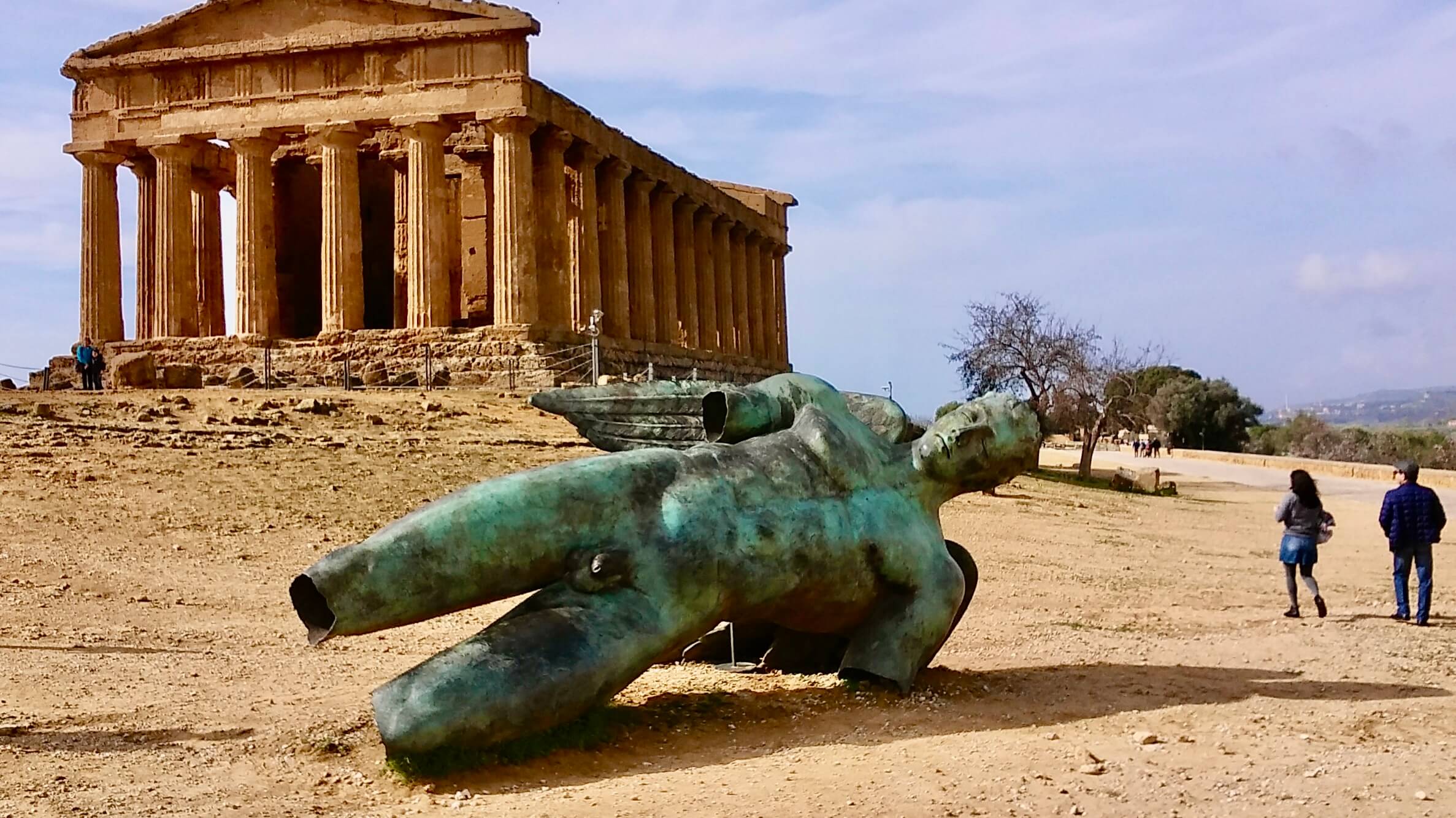 Inside the Valley of the Temples, Agrigento.
Inside the Valley of the Temples, Agrigento.The Significance of Ancient Greek ruins in Sicily
Sicily is the largest island in the Mediterranean. Because of its central location, it played a significant role in the history of ancient Greece.
The Greeks began to build settlements in Sicily from the 700s BC onwards. Later, the island became an essential part of the Magna Graecia, which extended from Southern Italy to present-day Turkey.
The heyday of Magna Graecie was between 600 and 500 BC—many ancient Greek ruins in Sicily date from this period.
The quality of the ancient Greek ruins in Sicily is exceptionally well preserved. They remain a significant testimony to ancient Greece's multiculturalism and artistic achievements.
Sicily's Greek settlements were important centers of trade and culture. All this laid the foundations for the later Classical period of Greek culture. In the time of Magna Graecia, the seeds were sown. Later, they bore fruit in inventions such as democracy and philosophy.
The Most Famous Ancient Greek Ruins in Sicily
One of Sicily's most iconic sites is the Valley of the Temples in Agrigento. This UNESCO World Heritage Site contains some of the best-preserved ancient Greek temples in the world.
Another unique place is the ancient city of Syracuse, now an archaeological park just outside the city center. Here, you can find, among other things, the ancient theatre, which still serves as a venue for ancient Greek plays.
Other important ancient Greek ruins in Sicily include the ancient acropolises of Segesta and Selinunte and the Greek theatre built on the slope of the beautiful Taormina hill.
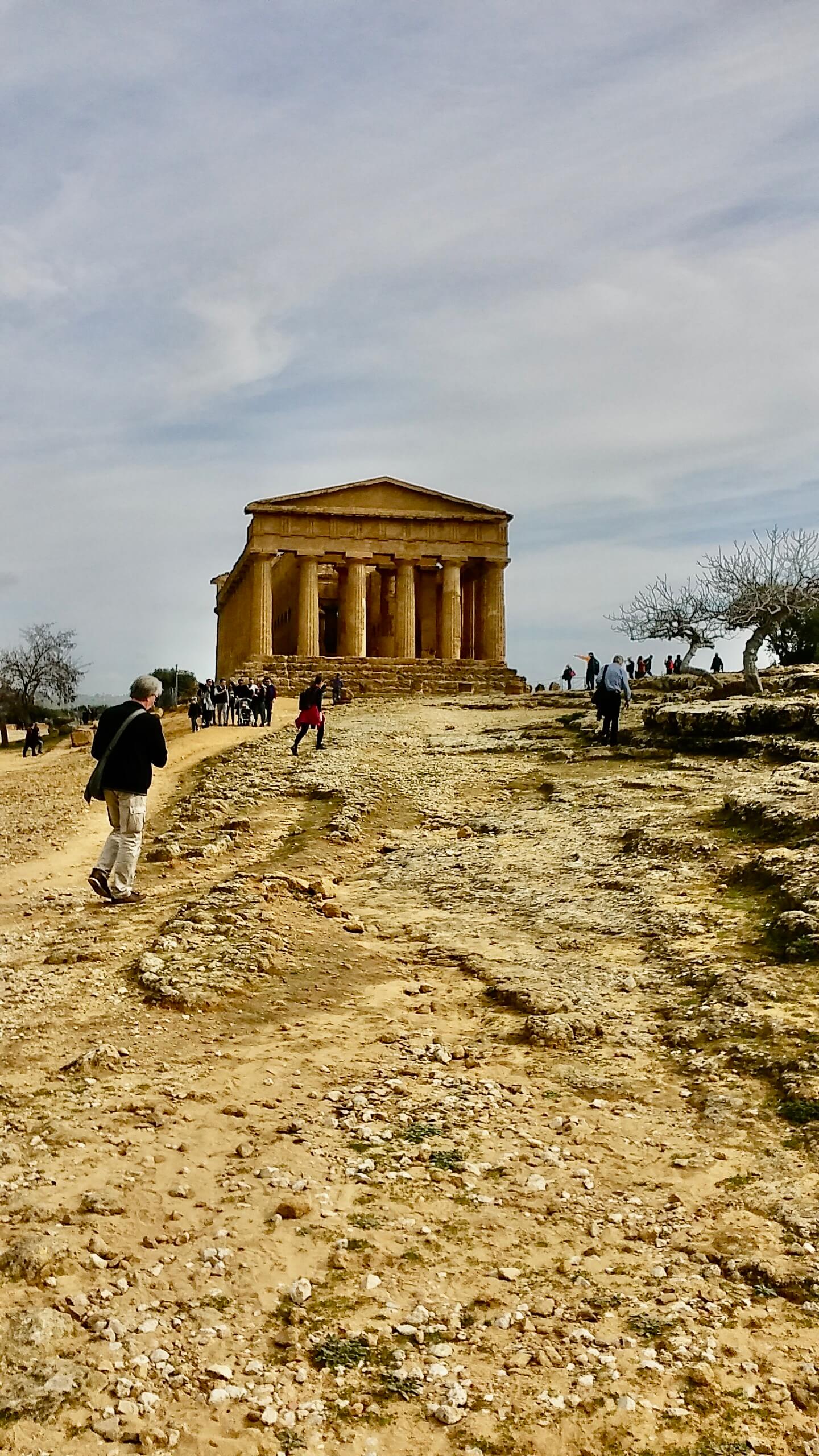 It takes a few hours to wander around the Valley of the Temples.
It takes a few hours to wander around the Valley of the Temples.Exploring the Valley of the Temples in Agrigento
Agrigento, on the southern coast of Sicily, is a veritable treasure trove of ancient Greek ruins. Despite its name, the Valley of the Temples is not a valley but a ridge between Agrigento and the Mediterranean Sea.
In the Valley of the Temples, you will find the remains of seven ancient Greek temples. These are the best-preserved Greek temples in the world outside Greece.
In addition to the temples, there are other archaeological sites, such as the first-century tomb of Theron. There is also an ancient cemetery in the form of underground catacombs.
These are from a later period. The names in the Valley are later inventions and are not accurate. For example, the place called Theron's tomb may be a monument to the Romans who died in the Second Punic War.
Discovering the Ancient City of Syracuse
The history of Syracuse dates back to the 8th century BC. The city was founded by the Greeks in 734 BC.
At its peak, Syracuse was the most influential city in Sicily. Cicero himself praised it as the most beautiful of all Greek cities.
From the 5th to the 4th century BC, Syracuse ruled Sicily. Today, the Neapolitan Archaeological Park contains the most essential remains from these glorious days.
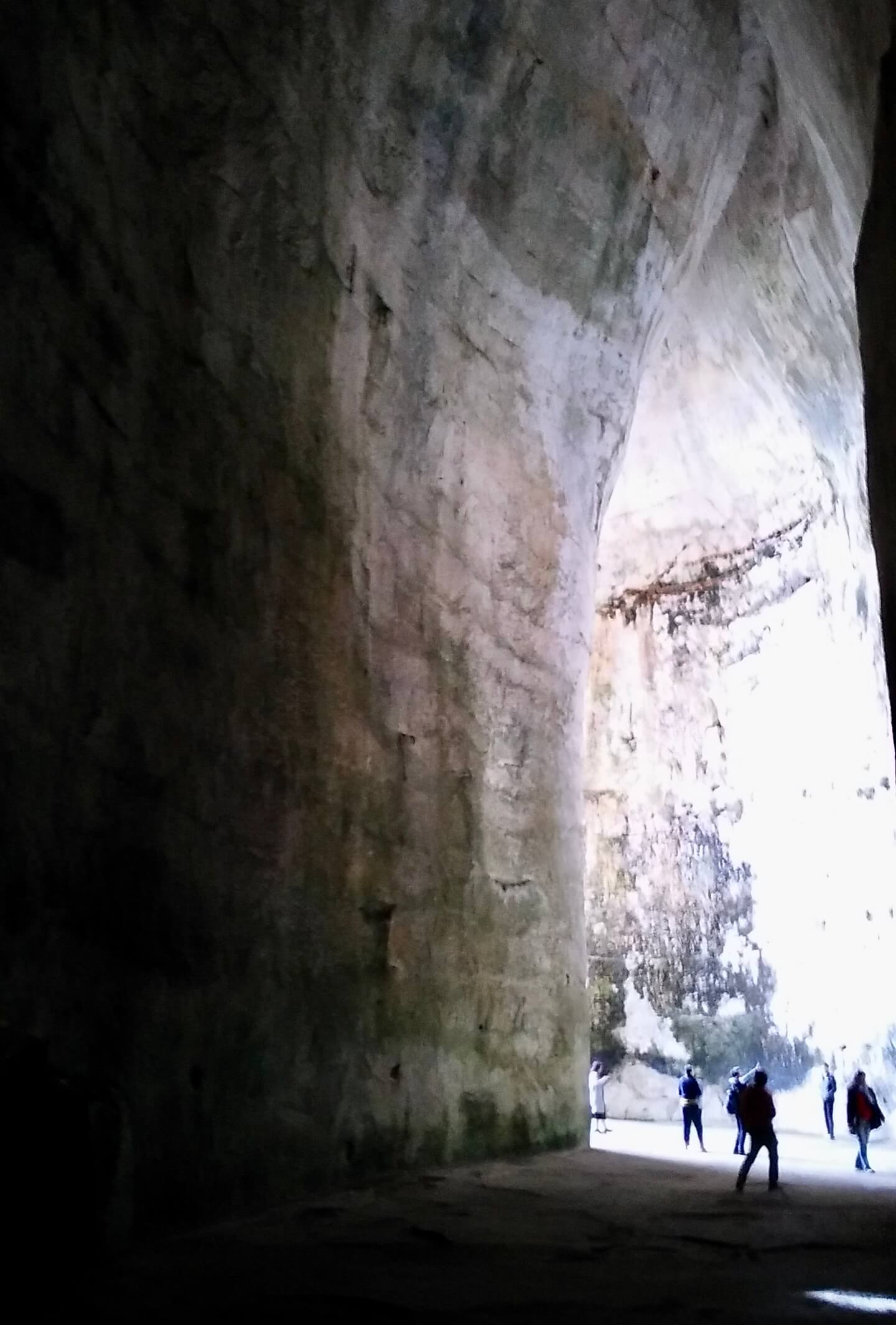 Inside the Ear of Dionysos.
Inside the Ear of Dionysos.The area initially known today as the Archaeological Park was one of the city's five districts. Here, the traveler will find, among other things, the Greek Theatre, the giant limestone cave known as the Ear of Dionysus, and the sacrificial altar of Gerone II.
The altar of sacrifice is the largest to have survived from those times. On feast days, hundreds of oxen were beheaded there and then eaten at the town's communal barbecues.
Towards the end of the 3rd century, Syracuse was besieged by the Romans. The battle lasted three bitter years. During this period, the most famous inhabitant of Syracuse, Archimedes, was killed in battle.
Eventually, Syracuse was forced to submit to Roman rule. After that, it was never the same again. Today, the city is one of Sicily's most popular tourist destinations.
The Archaeological Site of Selinunte
Selinunte is one of the most important archaeological sites in the Mediterranean. It is home to one of the most famous ancient Greek ruins in Sicily. It is situated in the southwestern part of the island.
The site was once a bustling Greek colony. Now, only the ruins remain as a reminder of its ancient glory.
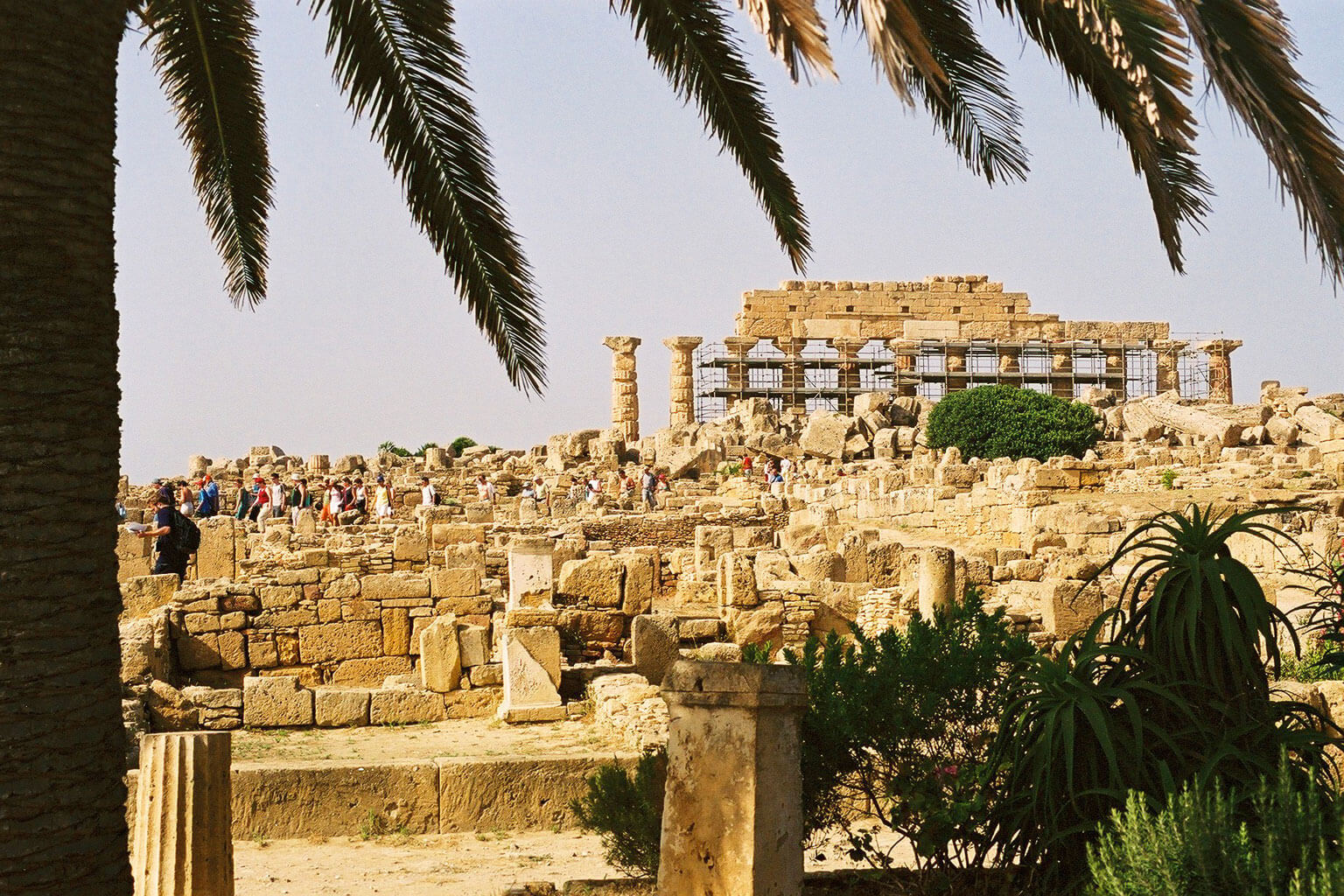 Akropolis in Selinunte (Photo: bjs)
Akropolis in Selinunte (Photo: bjs)The heyday of Selinunte dates back to the 500s and 400s BC. It was then home to an acropolis and several temples. Today, the site contains well-preserved remains of temples.
The traveler cannot help but be amazed at the size and scale of the structures. There are also many details to marvel at.
As great a city as Selinunte was in Magna Graecia, the Carthaginians eventually destroyed it. The Roman Empire put the finishing touches to the destruction when waging war against Carthage in the Second Punic War.
The Ancient Greek Ruins of Segesta
The archaeological site of Segesta is located in north-western Sicily, between Palermo and Trapani. It is, therefore, an ideal part of a trip to western Sicily. Or it can be combined with a beach holiday in one of the many nearby coastal resorts.
Segesta was once the main center of the Elymians. They were a Sicilian tribe that got on well with the Carthaginians. However, they did not look kindly on the Greeks' attempts at expansion.
But nothing helped; the Greeks took over the site and started to build a temple. The acropolis was the top of the mountain known today as Monte Barbaro.
What remains of this period is the temple of Segesta.
Construction of the temple began in 426 BC but was left unfinished after the Carthaginians invaded the city. The site is left with 30 Doric columns still in place. Despite its incompleteness, it is one of the most important ancient Greek ruins in Sicily.
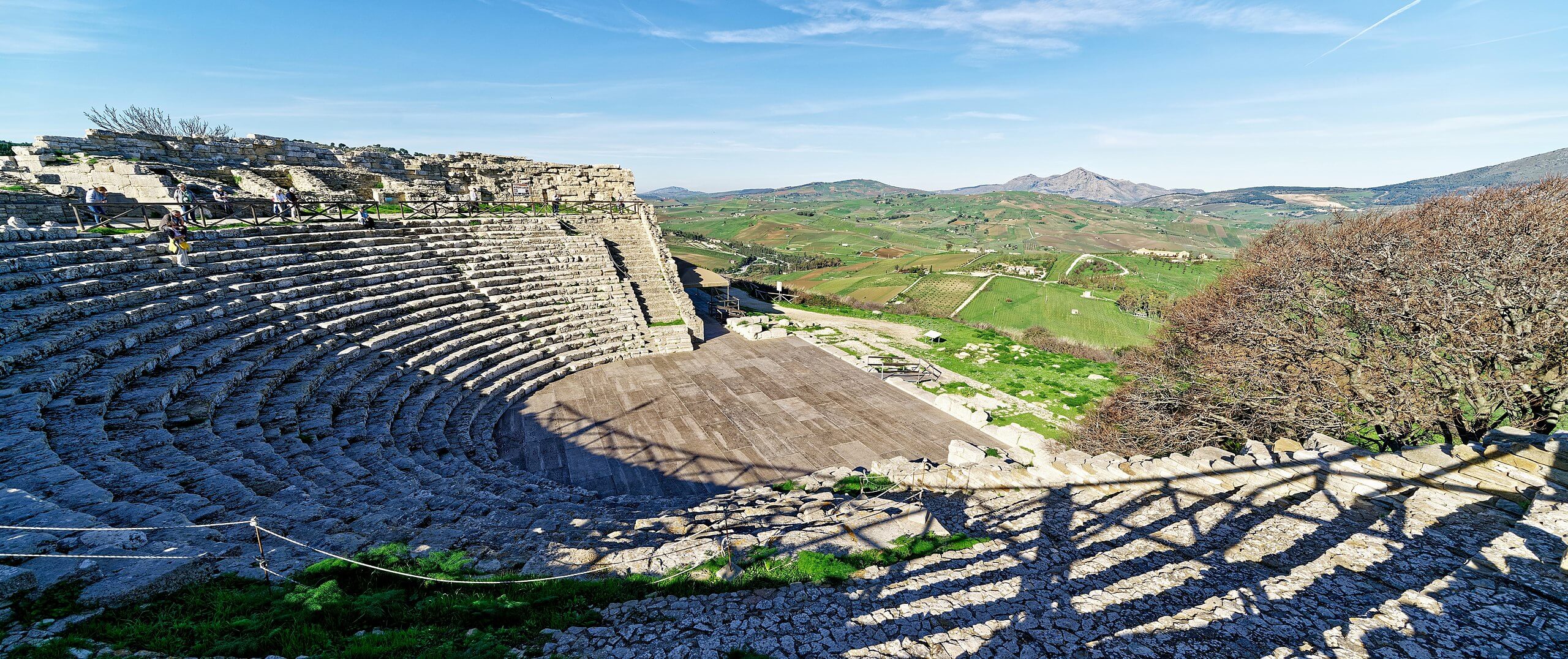 There's also a beautifully situated Greek Theatre in Segesta. (Photo: Holger Uwe Schmitt)
There's also a beautifully situated Greek Theatre in Segesta. (Photo: Holger Uwe Schmitt)Marveling at The Ancient Theater of Taormina
The Greek theatre of Taormina is, above all, dazzling because of its location. There's nothing wrong with the theatre itself; it's just that the view is truly spectacular.
The theatre is built on a hillside overlooking the turquoise sea and the volcano of Mount Etna. So it's a place for people interested in history, as well as just beautiful places.
The Greeks built the theatre in the third century BC. The Romans later renovated and extended it, making the Taormina theatre actually Greco-Roman.
However, it is not an amphitheater, as it is often called. The term amphitheater refers to the Roman gladiatorial arena. But the Taormina building is, first and foremost, an ancient Greek theatre.
The theatre is still used for concerts, classical music, opera, and ballet. It also plays a vital role in the annual Taormina Film Festival.
The Greek Theatre of Taormina has been given a role in Woody Allen's 1995 film Mighty Aphrodite. It also appears in the second season of the hugely popular TV series White Lotus, set in Sicily.
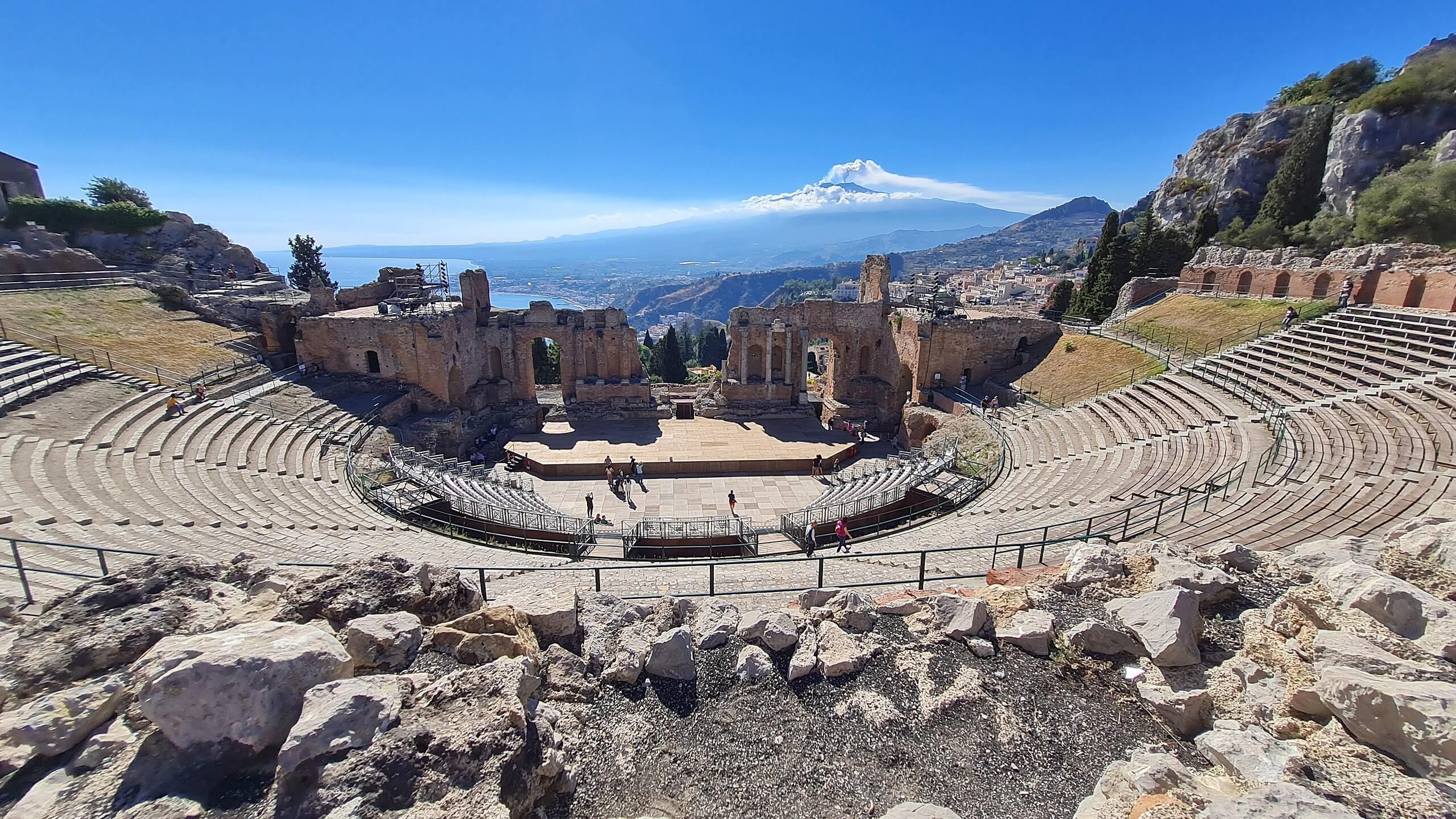 Greek Theatre in Taormina. (Photo: Derbrauni)
Greek Theatre in Taormina. (Photo: Derbrauni)Conclusion
Sicily is home to some of the best-preserved Greek ruins in the world. For example, the ancient temples of the Valley of the Temple rival anything to be seen in Greece.
Sicily played a significant role in the golden age of Greece. It laid the foundations for the ideas that would later flourish in the classical period of ancient Greece.
Greek colonies spread across Sicily from the 700s BC onwards. The Greek rule came to an end when the Romans invaded the island, a few hundred years later.
In eastern Sicily, the Greek influence can still be felt today in architecture, genes, and culture.
(This page last edited: March 29, 2025)
Recent Articles
-
Honeymoon in Sicily: Where Landscapes Stir the Heart
Dec 17, 25 12:21 PM
Honeymoon in Sicily: Timeless temples, coastal hideaways, slow meals, and landscapes that invite closeness. -
Best Time to Visit Sicily: Your Seasonal Guide
Dec 05, 25 04:23 AM
Find the best time to visit Sicily. Explore seasonal weather, crowds, prices, and highlights. -
Where to Stay in Sicily: Top Areas for Every Traveler
Nov 27, 25 08:14 AM
Where to stay in Sicily: A guide to the island’s best regions, helping you choose the perfect base for your trip.
Follow MANY FACES OF SICILY on Facebook, Instagram, Bluesky & Tumblr
Contact: vesa@manyfacesofsicily.com







